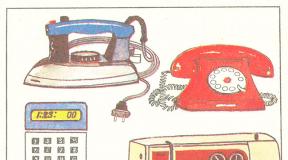Feeding cattle. Flour herbal and hay. Farm animals
The hay is one of the most important types of feed. Preparation of hay - ancient way to preserve feed, based on xeroanabiosis, i.e., on dehydration of the plant mass.
On average, in Russia, agricultural animals are obtained with a hay of approximately 40 ... 50% of feed units and 50 ... 70% of digestible protein consumed by them for the stopper period. The hay is the most important supplier of proteins, fats, carbohydrates, amino acids, vitamins B, B1 B2, K, C, etc., carotene (provitamin A), tocopherol (vitamin E), and in winter, the only source of vitamin D, as well as mineral salts , extremely necessary animals. Therefore, in the diet of sheep, horses and highly productive cows, hay plays an important role (for example, one cow per day is required to 5 ... 15 kg of high-quality hay).
Currently, the volumes of hay are harvested in Russia provide only half of the need for it. At the same time, a significant part of the hay is harvested with violation of technology and therefore has low quality.
The requirements for the quality of the hay is regulated by the sectoral standard OST 10243-2000. According to the standard of hay, depending on the botanical composition and gravity conditions, are divided into the following types:
1) seeded bean (legume plants more than 60%);
2) seeded cereal (cereal more than 60% and legumes less than 20%);
3) seeded bean-cereal (legumes from 20 to 60%);
4) natural feed grounds (may be cereal, bean, cereal-divergent, dying, etc.).
The standard regulates the moisture content - no more than 17% (83% of the absolutely dry matter), the color of the hay - from green to yellow-green and smell, peculiar to fresh SHEU (implicit and peeling odors are not allowed). With suspected the presence of toxic mushrooms (fusarium, aspergillus, aiotzium), residual amounts of pesticides The suitability of the animal feeding is set by the veterinary service.
In the hay of natural land, the presence of harmful and poisonous plants is limited: for plants of the 1st class - no more than 0.5%, 2 ... 3rd classes - no more than 1%. In the hay of seeded grass, the content of harmful and poisonous plants is not allowed.
In accordance with MPC and temporary maximum permissible level (MDA), established by the veterinary service of MSS Russia, hay should not contain nitrates of more than 1000 mg per 1 kg of feed, mercury - 0.05, cadmium - 0.03, lead - 5, arsenic - 0.5, copper - 30, zinc - 50 mg / kg. The control is subjected to the parties suspected of toxicity, especially in areas having environmentally hazardous production.
An outer is also normalized:
mass fraction of raw protein in dry substance (%, not less): for the legume of the 1st class - 15, 2nd - 13, 3rd - 10; cereals - respectively 13, 10 and 8%; seeded bean-cereal - 14, 11 and 9; hay of natural hayfields - 11, 9 and 7; Mass fraction in the dry matter of crude fiber (%, no more): for the hay of the seeded bean 1st grade 28, 2nd - 30, 3rd - 31; seeded cereal respectively - 30, 32 and 33; seeded bobovooslakova - 29, 31 and 32; hay of natural hayfalls 30, 32 and 33; Mass fraction of crude ash in dry matter (%, no more): for the 1st class hay - 10, 2nd - 11 and 3rd - 12.
With the billet, the hay is usually lost up to 40% of nutrients and up to 70 ... 90% carotene. The content of the latter in good hae should be at least 30 ... 40 mg / kg. The quality of the hay and the loss in its billet is determined by their technology, botanical composition, weather conditions, organizational, economic factors. To reduce losses and improve the quality of the hay, it is necessary to analyze and classify losses (except for the harvest in the process of its cultivation).
The losses occur (and accordingly they are classified) as a result of the violation of the timing of grass mowing; violations of the technology of mowing; biochemical processes occurring after sticking herbs in the drying process, mechanical losses during the cleaning of the hay; Violations of the technology of the workpiece; improper storage; bad feeding organization.
If you have found a mistake, please select the text fragment and click Ctrl + Enter..
Read also ...
- The work of "Alice in Wonderland" in a brief retelling
- That transformation. "Transformation. Attitude towards the hero from the sister
- Tragedy Shakespeare "King Lear": the plot and the history of the creation
- Gargantua and Pantagruel (Gargantua et Pantagruel) Francois Rabl Gargantua and Pantagruel Brief



















